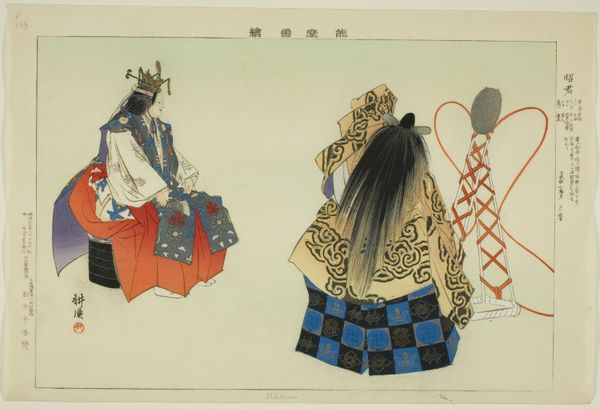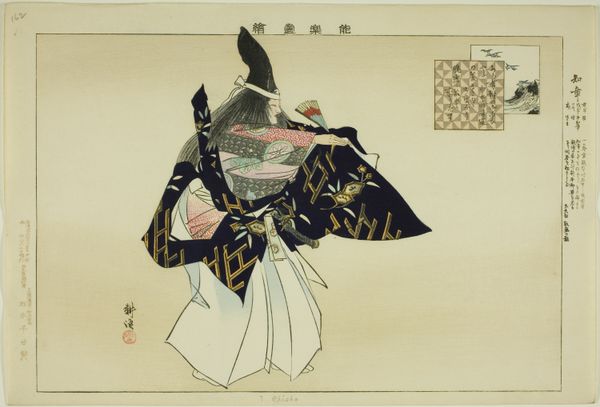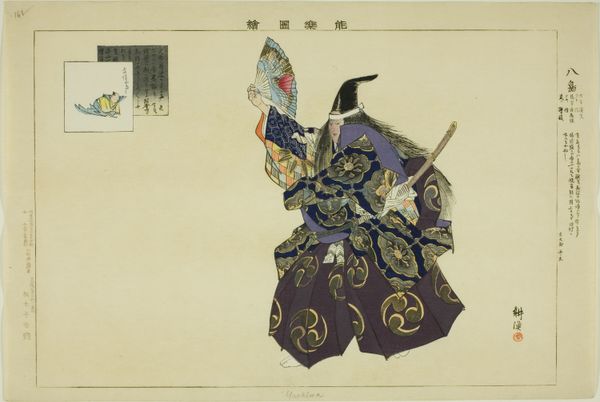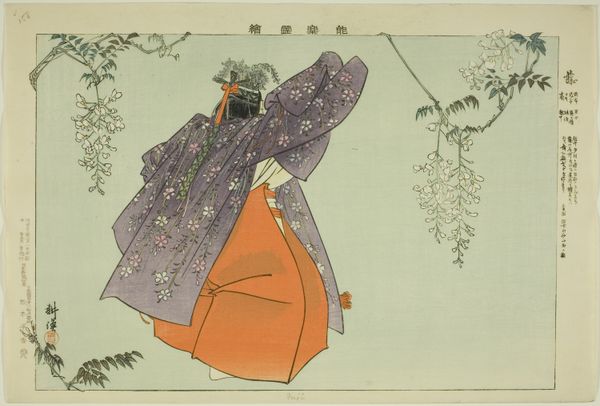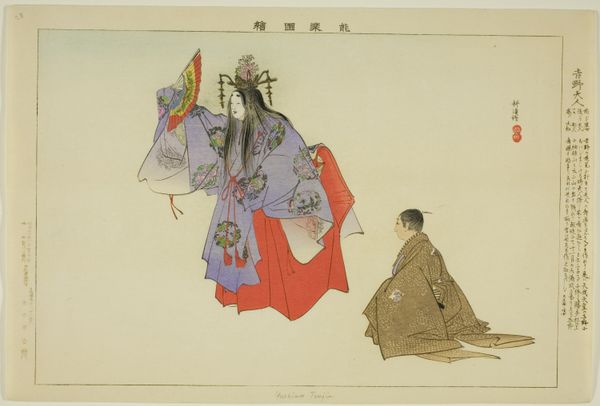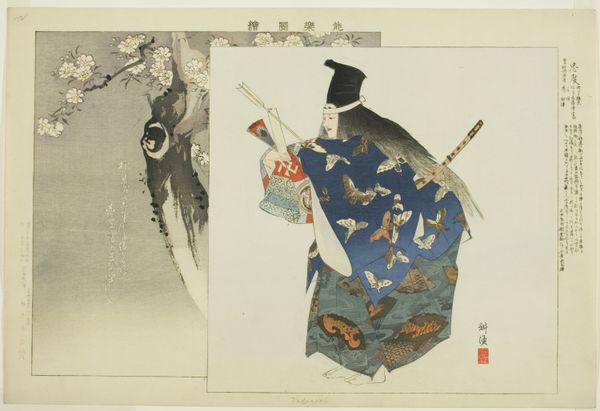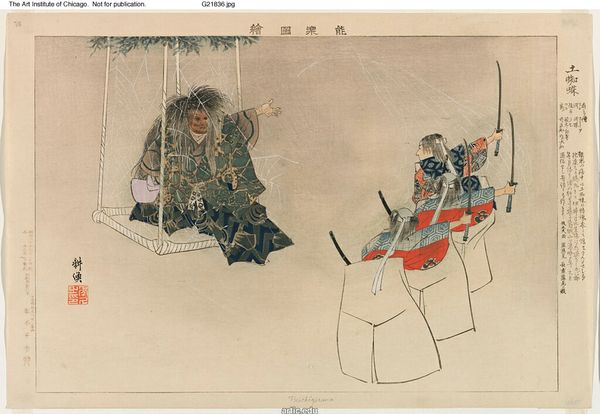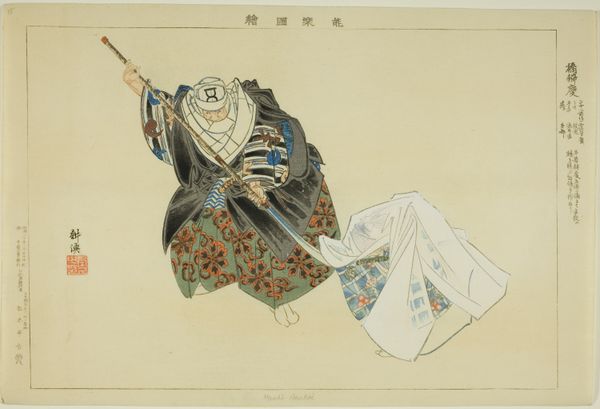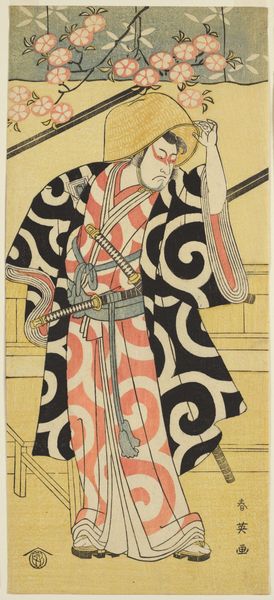
Kagetsu, from the series "Pictures of No Performances (Nogaku Zue)" 1898
0:00
0:00
Dimensions: Approx. 25.2 × 37.4 cm (10 × 14 4/3 in.)
Copyright: Public Domain
Art Historian: I am struck immediately by the sense of contained power, even stoicism, radiating from this figure. There's such quiet intensity in his gaze. Art Historian: That's quite right. We're looking at a woodblock print called "Kagetsu, from the series "Pictures of No Performances (Nogaku Zue)", created in 1898 by Tsukioka Kōgyo. It’s held here at The Art Institute of Chicago. Art Historian: The series title is key. This isn’t just a portrait, it’s a distillation of a ritual performance. Tell me, what’s the Kagetsu story traditionally convey? Art Historian: Kagetsu is a young male character role in Noh theatre. This print would be one in a series aimed at preserving aspects of the form during the Meiji era, as older feudal patronage was ending and a new national approach was being formulated, somewhat anxiously. Noh needed to define its modern place. Art Historian: The posture then speaks to that need for controlled, precise, almost architectural presentation. Notice the almost severe verticality created by the figure’s hairpiece and the line of the bow. And how about the detail of that small inset at the top left. It looks almost like an older artwork juxtaposed within the image, but the reference seems subtle to me. Art Historian: It is subtle. That pictorial "window" provides another context. We've got the actor as representative of theatrical culture. We also see traditional interior design with papered screens and plum branches which locate the actor in place, time, and society. A real framing of the artistic, literally! This isn’t just documentation of theatre; it’s making claims about the relationship of cultural art and society. Art Historian: Very interesting! And consider how the orange-red of the skirt grounds him. Red so often symbolizes vitality, even defiance. Against all that pale space and carefully modulated greys, it gives weight, I think. It symbolizes something crucial about this figure surviving within his culture. The bow is key. An implement of focus and singular will, a symbolic gesture of both tradition and the assertion of intent. Art Historian: Precisely. It visually speaks to how Noh theatre worked with new audiences in rapidly modernizing Japan: rooted, but newly aimed. Art Historian: Looking closer now, I see how Tsukioka subtly played with depths and shadow… it does make you feel, in many ways, as if you were watching a carefully crafted emotional play that reveals a silent and powerful stance. Art Historian: An excellent way to put it. Kōgyo and the producers were canny, reminding audiences what to value in the art as everything around it changed.
Comments
No comments
Be the first to comment and join the conversation on the ultimate creative platform.
